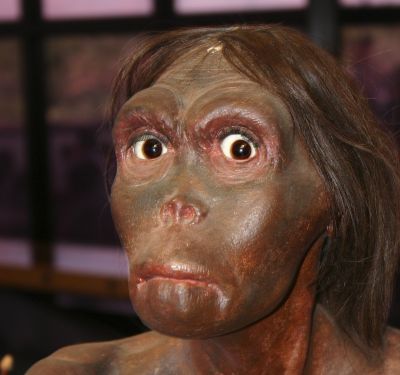













































Since the 1990s, scholars have believed that around 35,000 years ago the last of the Neanderthals sought refuge in southern Iberia, in an area known as Spain today. However, new dating evidence on fossilised bones from sites in the region has cast doubt on this timing. An international team of researchers has obtained new dates, suggesting that the fossils could be 20,000 years older than previously thought. The findings, which have implications for whether Neanderthals and modern humans co-existed, are published in the early edition of Proceedings of the National Academy of Sciences.
The work was undertaken by Dr Rachel Wood and Professor Thomas Higham at the Oxford Radiocarbon Accelerator Unit at the University of Oxford, as well as a team of Spanish archaeologists. The researchers used an improved dating method called ‘ultrafiltration’ that removes modern carbon that can contaminate the ancient collagen in bones, thereby giving inaccurate younger dates. The team tested 215 bones from 11 sites in southern Iberia where previous radiocarbon dating work had supported the late survival of Neanderthals. Radiocarbon dating is particularly sensitive to modern contaminants, which is why the ultrafiltration process was so important.
The researchers involved in this latest study found that the vast majority of the bones contained insufficient collagen to be dated successfully. Of the 27 bones that did contain sufficient collagen for testing, they were able to obtain dates for six of them from two of the sites(Jarama VI and Zafarraya). Both sites had previously been dated to around 35,000 years old, but the new dates were found to be consistently at around 50,000 years old.
Lead author Dr Rachel Wood said: ‘Our results cast doubt on a hypothesis that has been broadly accepted since the early 1990s that the last place for surviving Neanderthals was in the southern Iberian Peninsula. Much of the evidence that has supported this idea is based on a series of radiocarbon dates which cluster at around 35,000 years ago. Our results call all of these results into question.’
Co-author Professor Thomas Higham, Deputy Director of the Oxford Radiocarbon Accelerator Unit, said: ‘The results of our study suggest that there are major problems with the dating of the last Neanderthals in modern-day Spain. We now have to look very cautiously at the model of late Neanderthal survival in southern Iberia and focus our efforts on more rigorous dating programmes to further test the hypothesis. Our work suggests that at present it is unlikely that Neanderthals survived any later in this area than they did elsewhere in mainland Europe.’
The new dates are particularly significant in the debate about whether Neanderthals and modern humans interacted. In northern Iberia, 250 km north of Jarama VI, it is commonly accepted that modern humans were present from around 42,000 years ago. If the younger chronology was accurate, Neanderthal and modern humans would have been living side by side for thousands of years, presenting the heavily debated possibility that they could have interbred.
Over the years scholars have puzzled over an apparent disparity in the dates given to Neanderthal sites between the north and south Iberia, with sites in the south appearing to be much younger. The authors of this paper suggest that their new dates explain why the correlations did not quite match up.
Dr Miguel Caparros, from the Muséum National d’Histoire Naturelle in Paris and one of the excavators of Zafarraya, said: ‘New hypotheses are required to explain the disappearance of Neanderthals in this region.’
Source: University of Oxford